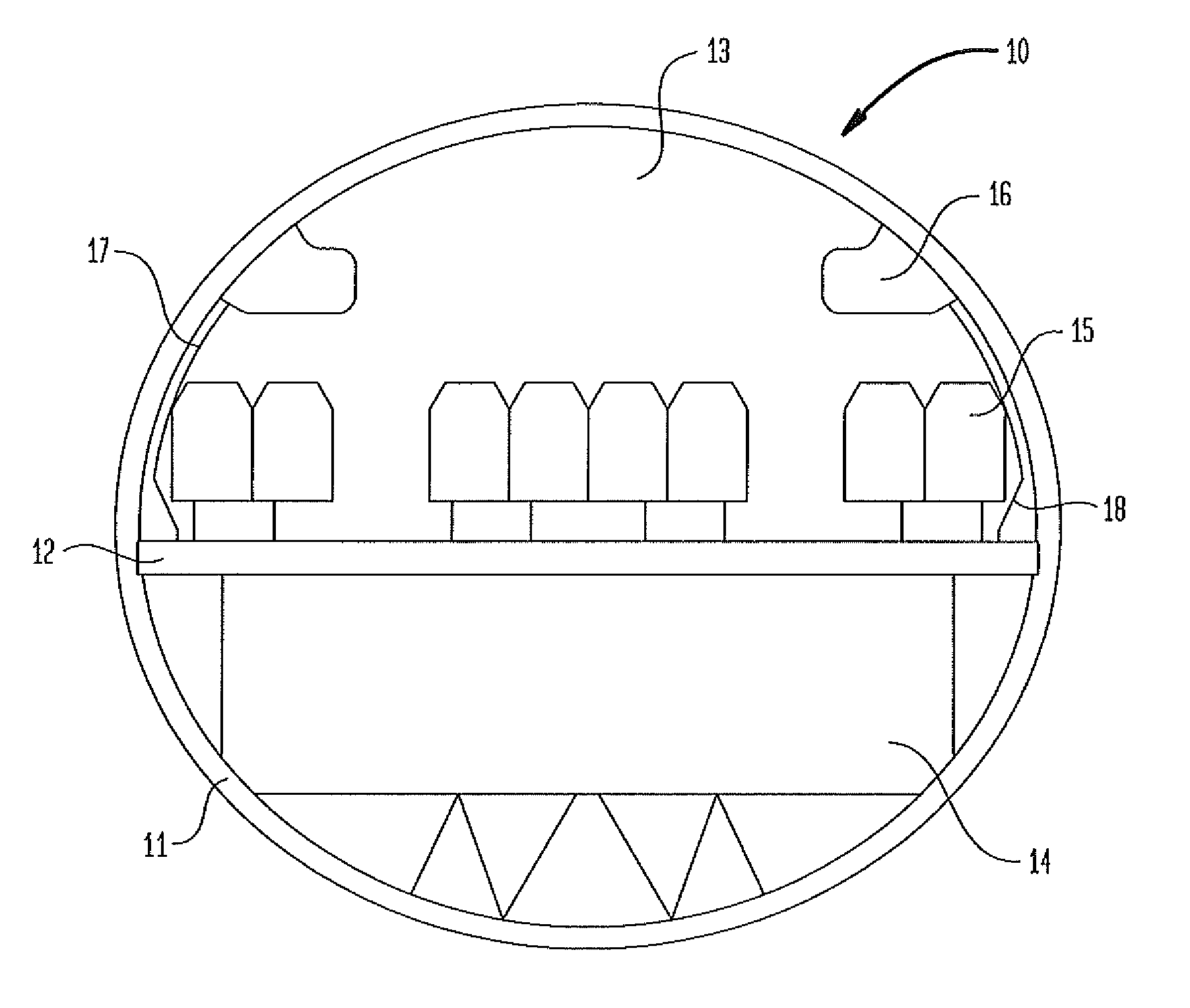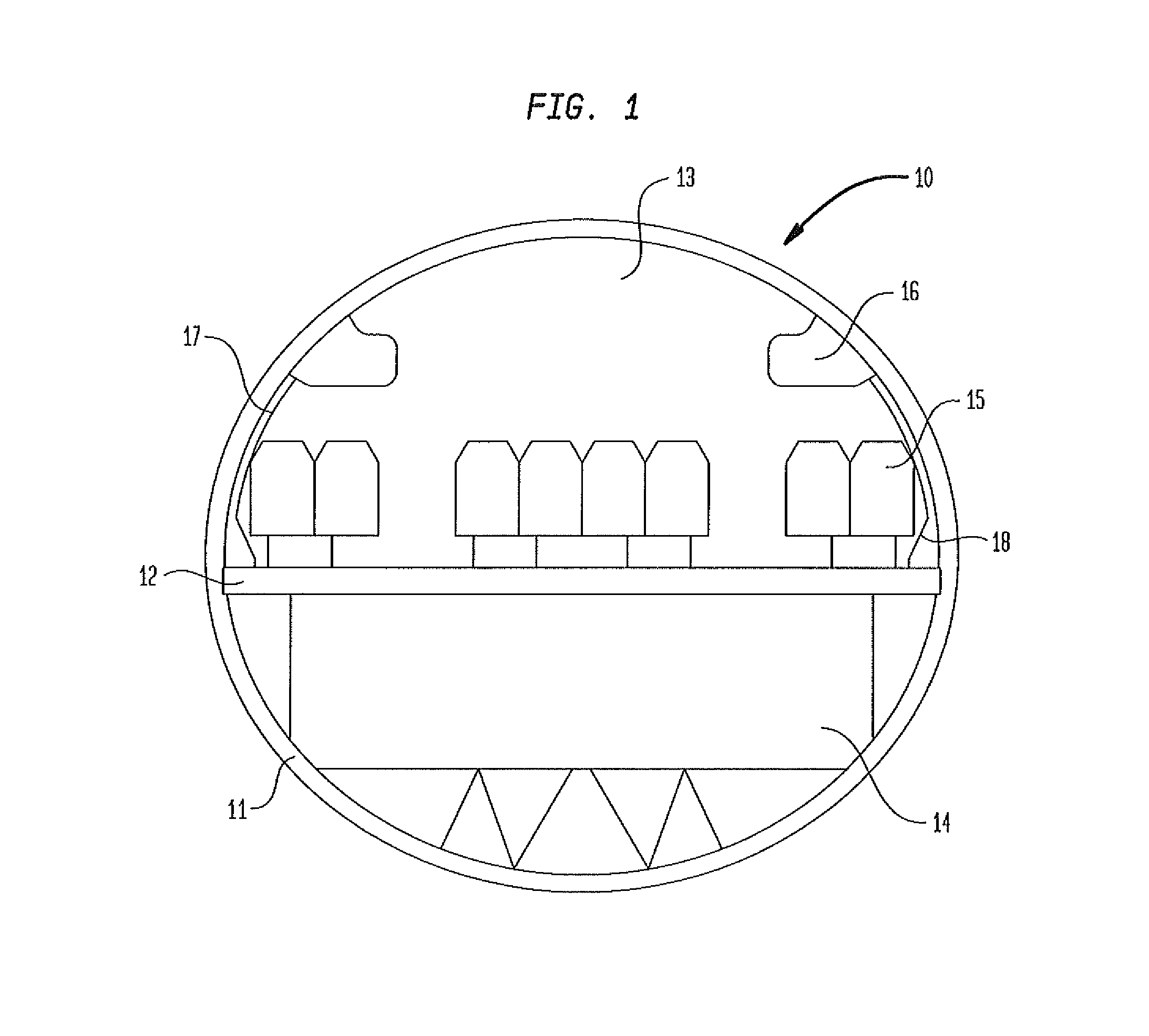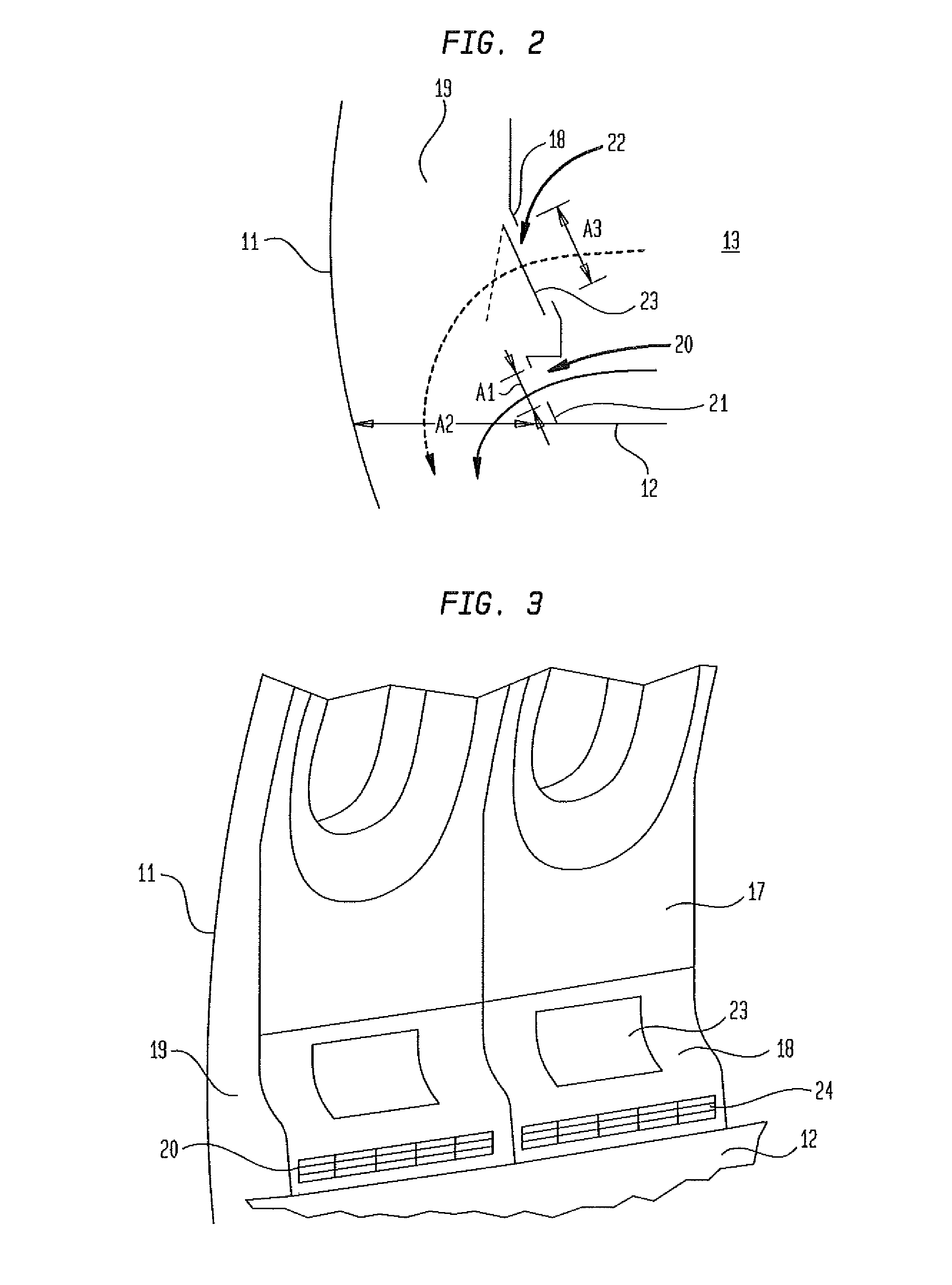Decompression device for an aircraft
a technology for aircraft and decompression devices, which is applied in the direction of aircraft accessories, fuselages, aircraft crew accommodation, etc., can solve the problems of simple design and save weight, and achieve the effect of simple design and quick pressure compensation
- Summary
- Abstract
- Description
- Claims
- Application Information
AI Technical Summary
Benefits of technology
Problems solved by technology
Method used
Image
Examples
Embodiment Construction
[0022]FIG. 1 shows a cross section of an aircraft fuselage. This aircraft fuselage 10 is delimited by the exterior skin 11 of the fuselage, within which various regions that are separate of each other are formed. For example, a passenger region 13 is separated from a cargo region 14 by means of a cabin floor 12. In the passenger region 13, passenger seats 15 with hatracks 16 arranged overhead are provided. On the inside of the exterior skin 11 of the fuselage the passenger region 13 is lined with lateral cover panels 17 and, between the outer passenger seats and the exterior skin 11 of the fuselage in the region of the foot space, with cover panels 18, also referred to as dado panels.
[0023]FIG. 2 diagrammatically shows a cover panel 18 with the decompression device according to the invention. As apparent from the illustration, a flow passage 19 is formed between the exterior skin 11 of the fuselage and the cover panel 18, which flow passage 19 makes it possible for air to pass betwe...
PUM
 Login to View More
Login to View More Abstract
Description
Claims
Application Information
 Login to View More
Login to View More - R&D
- Intellectual Property
- Life Sciences
- Materials
- Tech Scout
- Unparalleled Data Quality
- Higher Quality Content
- 60% Fewer Hallucinations
Browse by: Latest US Patents, China's latest patents, Technical Efficacy Thesaurus, Application Domain, Technology Topic, Popular Technical Reports.
© 2025 PatSnap. All rights reserved.Legal|Privacy policy|Modern Slavery Act Transparency Statement|Sitemap|About US| Contact US: help@patsnap.com



